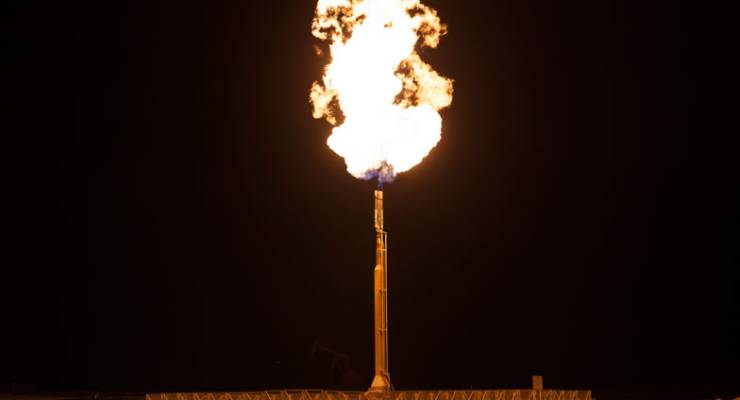
New University of Melbourne research, commissioned by The Australia Institute, shows the measuring and reporting of unconventional gas emissions in Australia is flawed — ignoring major potential sources of methane leakage. If the hidden emissions are similar to leakage rates being measured in US gas fields, they could overwhelm any government plans to meet Paris emissions reductions commitments.
To grasp the enormity of the issue, we need reminding of the scale of the dangerous unconventional gas experiment being undertaken in Queensland and what it physically involves.
Coal seam gas is methane. Methane is a powerful greenhouse gas. It is 86 times more damaging than CO2 over a 20-year period and still 28 times as bad when averaged over 100 years.
CSG companies operating in Queensland are removing vast amounts of this gas, equivalent to three times eastern Australia’s total gas use. If only a small measure of this leaks into the atmosphere, it could be disastrous. Frighteningly, methane levels in the US have increased by 30% during the fracking boom there.
The infrastructure is staggering. For the Queensland coal seam gas fields alone, tens of thousands of square kilometers of coal seams are being “dewatered” and “depressurized” to allow gas to migrate up tens of thousands of wells (and potentially other pathways like the Condamine River).
The gas will flow through dozens of enormous compressor stations. The toxic waste-water needs to be stored in huge dams and desalinated at massive energy-hungry water treatment plants. The whole network is connected by tens of thousands of kilometers of water and gas pipelines taking the gas to three massive processing and export plants in Gladstone.
[Dear Scott, coal’s a dud investment]
When the Queensland and Australian governments approved the enormous coal seam gas projects in Queensland, they took the gas industry’s word for it that only a minuscule 0.1% of the gas would leak. Actual measurements in US gas fields have found in the order of 100 times this amount of leakage.
Many people would be surprised to hear that in Australia we don’t actually measure the gas leaking from CSG production. Instead we use assumptions supplied by the US gas industry, from the early 1990s, well before the fracking boom even started, and designed for conventional gas production.
By contrast, when actual methane levels have been independently measured above US gas fields, up to 17% of the gas has been found to be leaking into the atmosphere. A US Department of Energy study of coal bed methane leakage in Wyoming found some wells lost 30% of the gas. These measurements are orders of magnitude above the levels assumed by the industry and government.
So could this be happening in Australia too?
The answer is that we don’t know. In part this is because we use these outdated and inappropriate gas industry assumptions, but, more scandalously, because we ignore many large potential sources of emissions.
And here is the “three-cup trick”.
The government makes an assumption that during production of the gas, there is only a minuscule leakage rate of 0.0058%, based on those US industry assumptions. They validate these assumptions on the basis of a CSIRO report that says this emissions factor may be appropriate for use in estimating leakage from CSG well pads.
But what they don’t mention is, as today’s report shows, that the well pads are just one small part of the infrastructure that the gas passes through. They are dwarfed by the massive compressor stations, water treatment plants, waste water damns, water and gas gathering lines all with vents direct to the atmosphere and three 500 kilometre-plus pipelines to Gladstone.
All these potentially major sources are assumed to be zero.
The CSIRO report that the government uses to validate the assumption even states that, at times, the researchers were unable to measure the well pad emissions due to the much larger emissions coming from this other infrastructure.
[Coal is amazing — amazingly insignificant to our economy]
It is hard to interpret the exclusion of this infrastructure as other than a deliberate attempt to hide unconventional gas emissions.
Disturbingly, further CSIRO research looking into CSG emissions is funded by APLG, Origin, AGL, QGC and Santos, the very companies with a huge vested interest in finding low leakage or attributing them to other sources, like “natural seeps”. Worse still the research committees overseeing the research are riddled with executives from these companies.
So how big a problem could this be?
The University of Melbourne research shows that if leakage from Australian CSG is around 10%, similar to the actual leakage found US CSG and shale gas fields in Texas, Pennsylvania, Dakota, Wyoming and Utah, it would be equivalent to Australia’s entire transport emissions each year.
It would also entirely negate the governments stated measures to abate 900 million tonnes of emissions to meet the our 2030 commitments under the Paris Agreement.
If the government wants to actually meet its Paris commitment, it needs to base its reporting on CSG methane emissions on independent measuring of monitoring of methane leakage that is not funded or overseen by the gas industry.







Leaving aside the huge volumes of water removed – thereby reducing groundwater available to the district farmers and often causing good aquifers to be contaminated from several directions
Taking these findings at face value . . . . truly, truly frightening!
So wait, even if we set aside the fact the gas absolutely shouldn’t be crammed into the atmosphere right now, these things could be losing 10-20 percent of their gas, and so only can exploit ~80% of it? What a damn waste.
Hey, we gotta get that stuff outa the ground asap coz, like, there’ll be no market for it in another generation (sic!) or three.
Bugger posterity, drill, baby drill and doncha know coal is good for humanity.
To paraphrase the radio reporter as the Hindenburg burned… no sorry, even my cynicism fails now.